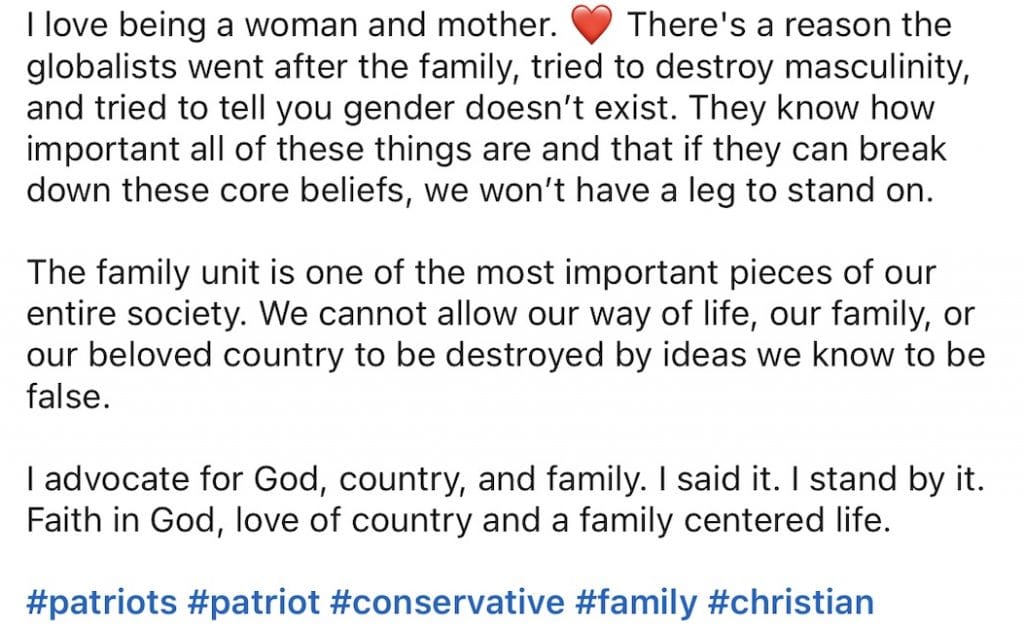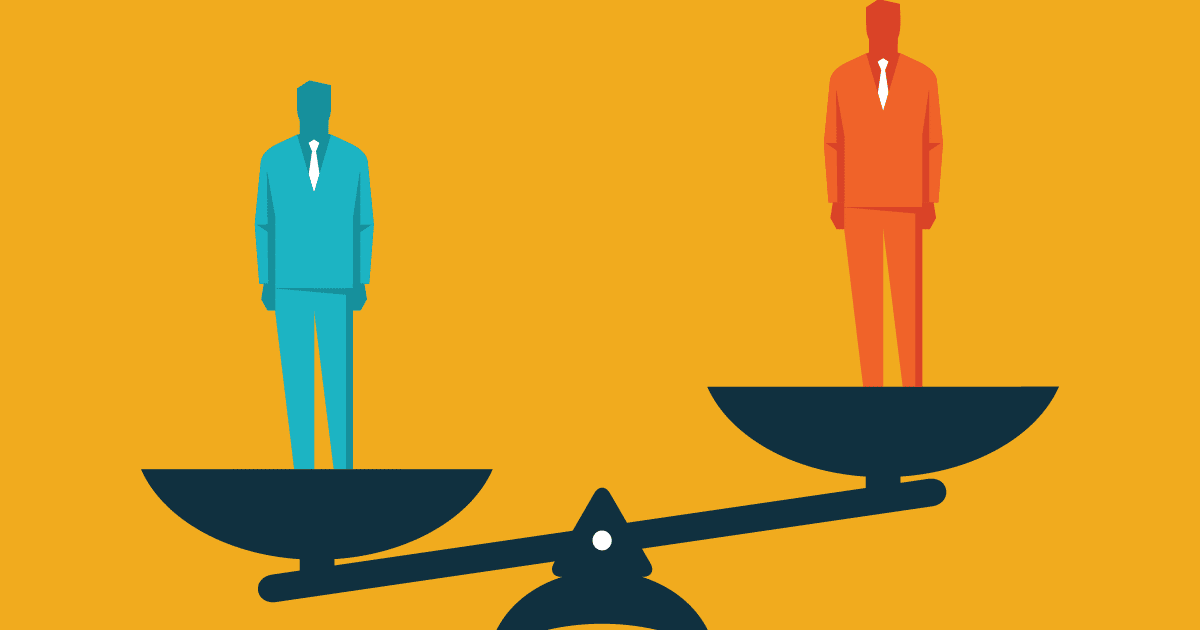I would like to discuss how our bias contributes to discrimination, marginalization, and subordination. The heart of bias, regardless of which kind—confirmation, prejudice, my side, etc.—is about favoring one thing over another. The reason that I think this is important is because the next post will review Jonathan Haidt’s book titled “The Coddling of the American Mind,” which is about microaggressions. People engage in microaggressions exactly because of their attitudes and beliefs towards others.
A Patriot’s Biases

Linkedin Post
The above was taken from LinkedIn, where I, surprisingly, witness daily scuffles involving differences in beliefs and values. A decade ago, if someone had the nerve to post a brazen statement about their conservative beliefs on Linkedin, it would have triggered me into articulating a response. Instead, I now view these posts as opportunities to learn about how we think and act. If we recognize that we all think that we are justified in our political beliefs, that is, they are right and moral, then it is easier not to get offended. The beliefs that this person has are based on biases, which are driven by her likes and dislikes. This is not an intellectual position, as I doubt this person has given any thought to it. I do not have a problem if this person wants to believe in fairy tales and take pride in her country, but I do have a problem with her touting traditional family values at the expense of exclusion.
To post something like this is nothing more than unabashed pride and an urge to stick it in the face of those liberals. Furthermore, this threat she writes of does not exist. No one wants to destroy the family but rather make it more inclusive. Instead, she is threatened by liberals corrupting the purity of the family by introducing “unconventional” members. I also do not think most deny that gender exists in some sense but rather claim that it is more malleable than once thought and not solely dependent on our sex. The problem is that she is excluding others who do not fit the conventional definition of what constitutes gender and family. We cannot fault her for having preferences toward God, country, and family, although we may dislike her because she is not one of us. We should, however, identify our own in-group biases and determine whether disliking the person aligns with our larger goals and ideals.
How We Use Bias
bias: prejudice in favor of or against one thing, person, or group compared with another, usually in an unfair way
We all have biases because we judge others’ abilities, behavior, and appearances. Biases, however, lead to either playing favorites or treating others unfairly (discrimination). Biases are not necessarily inaccurate, though. Fox News, for example, is biased not because it is inaccurate but rather because it favors information that conforms to its beliefs, which leads to a narrow perspective. Biases are a byproduct of how the mind works. We have a confirmation bias when we select information, which makes it a feature of the mind. Likes and dislikes drive our biases. We can hardly prevent them since it is automatic. The parts of perception to be concerned with are prejudices and stereotypes. Prejudice is the dislike, hate, or contempt that we feel towards a person or their attributes. At the same time, stereotypes are the overgeneralized beliefs that we hold towards a member of a particular kind of group.
Stereotypes have a few properties. First, they are perceptions of a person’s appearance, behavior, or abilities, which may or may not be true. When we use stereotypes or labels, we are reducing a person’s essence to those qualities. Second, we assert that these are the typical qualities of all group members. Stereotypes are dangerous because we can judge an entire group of people as being “less than” before we even know them. To create these stereotypes and prejudices, we must evaluate someone’s qualities in a negative light (i). When we do this, we may feel something beyond mere dislike, such as contempt or hate. We feel contempt when we deem something inferior. We feel hatred when someone poses a threat to our status or well-being. Contempt can make us feel justified in keeping others in their place, while hate can lead to violence. It is for these reasons that contempt and hate are threats to equality. The antidote to contempt and hate is to look for what we have in common with others, not our dissimilarities.
When Bias Is Justified
bigot: a person who is obstinately or unreasonably attached to a belief, opinion, or faction, especially one who is prejudiced against or antagonistic toward a person or people based on their membership in a particular group
We can all experience interpersonal rejection to some degree based on qualities that we may have or lack. We are not all equally desirable. If we naturally have a bias towards the attractive, smart, and capable, does this mean that these people are “better than”? Meritocracy, the idea that effort and aptitude justify rising through the ranks, suggests that it is acceptable to have a bias against those who are unintelligent and incapable within our economic system (ii). We often unintentionally reject the undesirable and inadequate in subtle but hurtful ways. When we seek romantic partners, we tend to have a bias against those who are unattractive. When is it unreasonable to have a bias against someone? Social movements, fortunately, have given us the categories of sex, gender, race, class, and ability. Indeed, it seems silly to dislike someone over these qualities, but what about those that don’t make the fit (iii)?
There is a difference, however, between people not associated with a traditionally marginalized group versus those that are. This has to do with which group meets the criteria of being oppressed. Oppression is when one group, typically white-dominated males, has more power and privilege over the other. Oppression affects people’s lives at three levels: interpersonal, institutional, and internalized. Interpersonal biases consist of the biases applied to the marginalized. Institutional biases are the laws and social norms that form as a result of these biases. Internalization is when the marginalized internalize the oppression as shame and inferiority. This internalization is also known as subordination. The outcome is that their quality of life, both mental and physical, is compromised.
Notes:
i) We can also evaluate someone in a positive light and make a stereotype. What about all Asians who excel in mathematics? Positive stereotypes are interesting because, I would like to be associated with a group that excels at math. But it makes them feel uncomfortable, perhaps because it draws attention to them being “different” and could be used as a source of prejudice. It also simplifies and reduces Asians to an absurd degree. Because, of course, people are complex and different even within groups.
ii) Meritocracy could be used in a couple of different ways to justify power and control. It is conventionally said to be a fair way of advancing in the hierarchy because all that is required is effort and capability. However, we recognize that not everyone has the same privileges and access to resources as others. So it is a half-truth. But even if we eliminated privilege, it can still be interpreted as unfair because what about the people who are unintelligent and incompetent? The system becomes rather challenging for them.
iii) Even within these groups, there is a bias that the dull-witted and incompetent are undesirable. If we examine advertising that attempts to improve the image of people with disabilities, we will notice that they are often portrayed as intelligent. This is not always the case, though; five million Americans suffer from some form of intellectual disability. It is for these reasons that I generalize when I discuss marginalization. When I use the word marginalization, I mean those that are more or less non-existent and impotent, but not just in the political sense. People who are undesirable and inadequate are often invisible, even in their day-to-day interactions.

